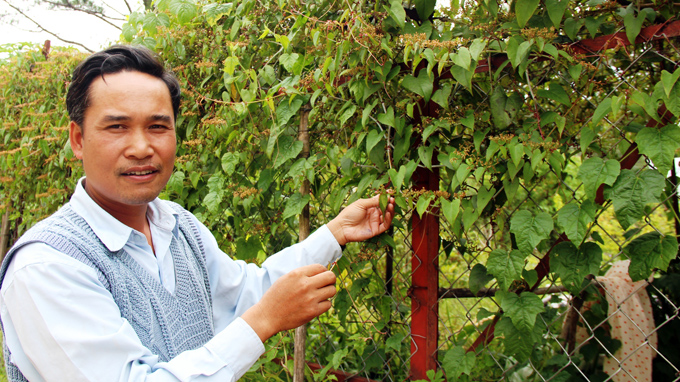126 breeds of wild vegetables specific to Vietnam are being scientifically identified and studied to ensure that the increasingly common addition of such plants to restaurant and family menus is a healthy choice.
Gone is the time when wild vegetables were limited to the daily meals of the ethnic minority people who live near forests.
In the past few years, these plants have become increasingly popular in restaurants of Lam Dong province’s Dalat city. They are a newfound delicacy, popular with tourists and locals alike.
According to Mai Xuan Dung, who owns a small chain of restaurants in Dalat, nothing was known about these wild vegetables until recently, when they suddenly became popular.
A plate of mixed vegetables such as “la bep”, “sam dat”, “mountain mong toi,” and “rau phan”, all popular choices, varies from VND40,000-70,000 (up to US$3.3).
“Wild vegetables are now ‘in vogue’ as they are highly nutritional, hygienic and relatively cheap. On a busy night, we often run out of them,” Dung said.
The vegetables are usually prepared into simple but tasty boiled and fried dishes and soups.
Most of the vegetables come from ethnic minority households in such districts as Lac Duong, Da Huoai and Da Teh.
Lien Kim, a wild vegetable farmer in Lac Duong district, said that since orders from restaurants started flooding in, he has begun to grow them himself as well as continue to harvest those that grow naturally in nearby forests.
“Wild veggies are very easy to grow and safe for human consumption. They don’t require much care, such as plowing or fertilizers, or processing time before cooking. We’re planning to increase our growing areas to cope with the surging demands,” Kim added.
Attracted by the ease of growth and high profitability, many locals have asked Kim for seedlings to grow them at home.
Owner of Chau Loan restaurant, located near Lang Biang tourism complex in Lac Duong district, said that most of their diners and tourists order dishes with wild vegetables.
She has to place orders with the farmers a long time ahead, and even sends her staff to purchase them directly at the farms in Dalat or neighboring provinces.
The vegetables have recently become her restaurant’s main specialty and are now a fixture on the menu, as her daily revenues drop by half on days when she runs out of them.
“Many diners also ask us for fresh tender shoots to grow them at home. Maybe we’ll build a sapling greenhouse soon,” she smiled.
The wild veggie “taming” project
Few know that behind the increasing popularity of wild vegetables on the menus is a large-scale scientific project to identify and study the vegetation thoroughly.
“I was quite surprised seeing the ethnic minority people cook the vegetation they bring home from the forests. But when offered, I was really amazed at their delicious, exotic taste,” Luong Van Dung, vice dean of Dalat University’s Biology Faculty and the project manager, recalled when asked why he chose to research wild vegetables in the first place.
The research team currently has 252 dried specimens of the 126 breeds, which range from edible vegetables and seasoning herbs to those with medicinal properties and can cure such ailments as hypertension, coughs, toothache, hepatitis and rheumatism. The vegetables all contain proteins and lipids, and a number contain valuable amino acids.
Among the 126 studied breeds, one plant, “dang sam” (codonopsi javanica), has been enlisted in the Vietnam Red Book of Endangered Species. Thirty two of the plants are both tasty and boast medicinal properties.
According to Dung, cultivation of clean wild vegetables is possible using local farmers’ safe, meticulous farming techniques.
The team has selected the nine highly nutritious and best tasting breeds for experimental farming. They are all easy to grow and can be grown alongside industrial plants such as coffee, rubber and cashews year-round.
“The project has mapped out a new direction for wild vegetables regarding their nutritional and economic values, while attending to the conservation of such valuable natural resources. We’re positive that with the proper attention, we can maintain the development of these valuable plants,” said Phan Van Dat, from the provincial Department of Science and Technology.




















































